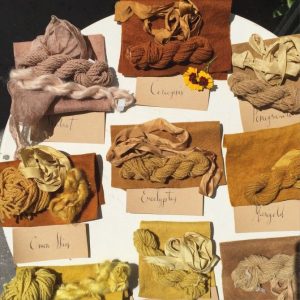 Natural dyes are formed from various parts of plants, and naturally occurring organic material. You’ll find these dyes in kids organic pajamas, adult clothes and lots of towels and fabrics used around the house (including bedding). Here, we’ll look at natural dyes and learn the basics behind them to see why there is growing demand for this return to nature.
Natural dyes are formed from various parts of plants, and naturally occurring organic material. You’ll find these dyes in kids organic pajamas, adult clothes and lots of towels and fabrics used around the house (including bedding). Here, we’ll look at natural dyes and learn the basics behind them to see why there is growing demand for this return to nature.
Sustainable
We don’t often think about the impact kids organic cotton pajamas can have on the environment, but buying organic is supporting a more sustainable future. Organic farmers use crop rotation, and other methods, for pest control and farming without harmful chemicals. They also don’t over-farm. The same applies to naturally occurring dyes, which use roots, berries and other organic matter (including fungi) to create vibrant color schemes.
How Dyes are Made Naturally
Dyes that are used in boys organic pajamas are made by placing whatever material is being used to make the dye into a warm water bath. This releases the natural colors of the crushed berries, chopped flowers and crumpled branches, roots and bark. The entire process can take up to three days to create a vibrant color.
There are mineral salts call mordants, which allow the dyes to adhere to clothing better. Aluminum, copper, tin and iron are quite common, as well as iron and alum. Aluminum and iron are considered to have the lowest toxicity of these metals, with copper and chrome being most toxic.
Hobbyists can make these dyes too, which is nice if you want to control the mordants used. Most organic clothing companies are upfront about their process, although you may need to do some label decoding to find out what’s really going on.
Bio: KoraVera sells ultra-clean kids clothing online, with 100% organic cotton. No metals, no toxins, shop KoraVera.


